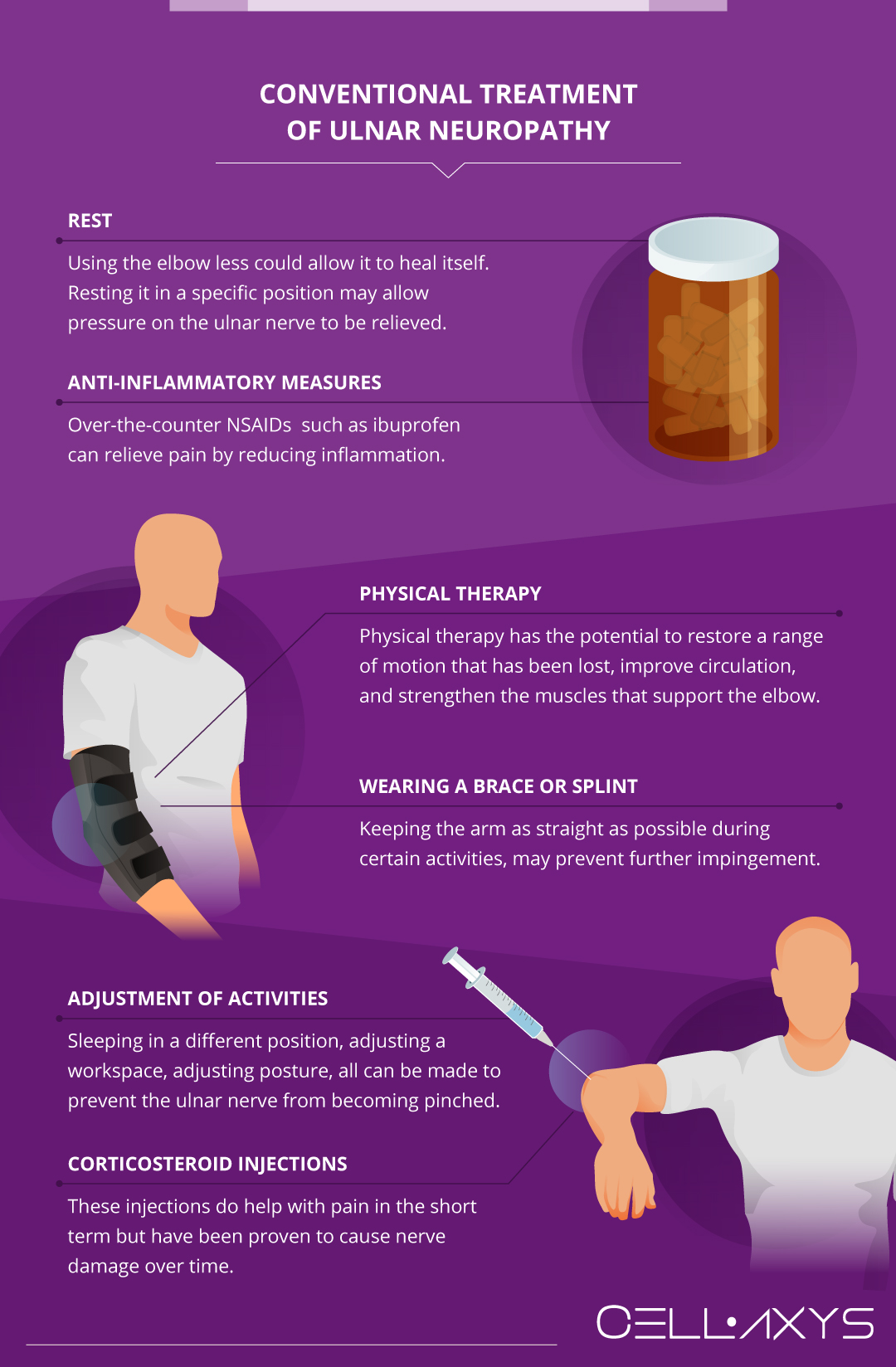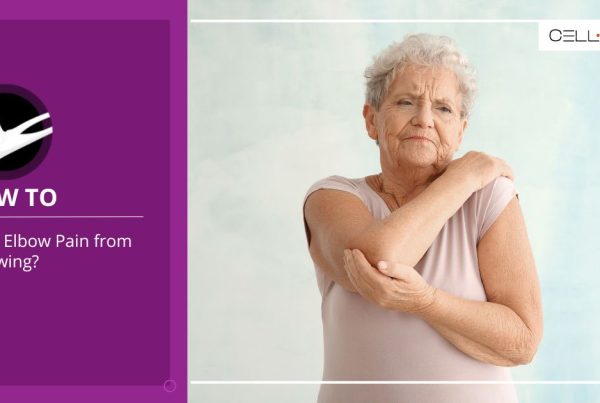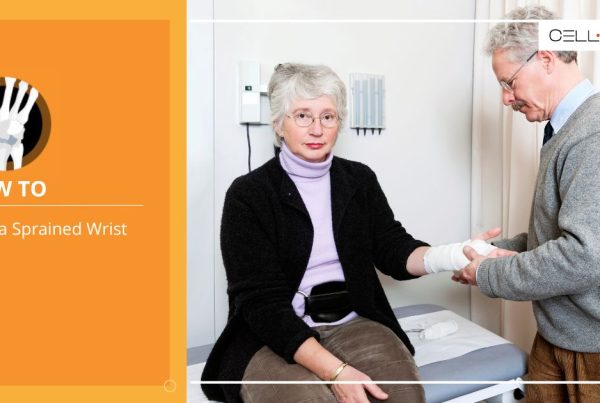Published on: October 18, 2019 | Updated on: August 29, 2024
Nerves located throughout the body allow us to move and feel. These nerves are often surrounded by protection but they can become pinched or damaged, leading to neuropathy. Pain in the elbow might be caused by ulnar neuropathy.
This pain can also radiate into the forearm and part of the hand, where the nerve resides. Experiencing pain in this location can have a significant impact on daily life. Treating this condition is necessary to return to a normal life.
Anatomy of the Elbow and Neuropathy
The elbow consists of 3 bones, the radius, and ulna in the forearm, and the humerus in the upper arm. The joint that is formed by these bones is protected by muscle groups, tendons, and ligaments.
These soft tissues around the bone also help to protect the ulnar nerve. This nerve is also protected by what is called the cubital tunnel. Ulnar neuropathy is sometimes also referred to as cubital tunnel syndrome, and is similar to carpal tunnel syndrome but in a different location.
Nerves that exist outside of the brain and spinal cord are referred to as peripheral nerves. Their purpose is to send signals from all over the body to the brain. This allows for motion and sensation to occur. These nerves are all over the body and are a crucial part of everyday life.
The ulnar nerve begins at the top of the arm and extends down to the hand. In the hand, it extends into the pinky and ring fingers. The ulnar nerve is sometimes referred to as the “funny bone” nerve. The sensation of hitting the ‘funny bone’ is caused by the ulnar nerve, which is why hitting it can also cause tingling in the hand or forearm. When peripheral nerves become damaged, this is called neuropathy.
Neuropathy can be caused by a nerve being pinched, damaged as if from injury, or overuse of the nerve. There are two types of neuropathy – mononeuropathy and polyneuropathy.
Each type is classified by the number of nerves that have been damaged. Mononeuropathy refers to when only one nerve is damaged – the most common cause is a traumatic injury. Polyneuropathy occurs when more than one nerve is damaged and is more common.
Neuropathy is most likely to occur after the age of 55 but can occur at any time to anyone. People who are at a greater risk of developing ulnar neuropathy are:
- Manual laborers: continuous, repetitive motion can pinch the nerve over time.
- Poor nutrition: vitamin B has been linked to nerve damage. People who are deficient in vitamin B may be at greater risk of developing neuropathy.
- Diabetes: nerve damage is associated with the diabetic condition, and being diabetic may exacerbate ulnar neuropathy.
- High blood pressure: swelling inside the body can pinch the ulnar nerve.
- Arthritis: advanced arthritis can alter the structure of joints, which may lead to a pinched nerve.
There are other behaviors and conditions which may also lead to ulnar neuropathy, these are the most common.
Signs and Symptoms of Ulnar Neuropathy at the Elbow
The area affected by this form of neuropathy is the forearm and ring and pinky fingers. Most symptoms will be felt in this area. These symptoms include:
- Tingling
- Pain
- Loss or change in sensation
- Numbness
- Weakness
Certain activities can worsen these symptoms, as sometimes the nerve can become more pinched in certain positions. Activities such as bending or straightening the arm, grasping objects, and typing can all contribute to symptoms.
If these symptoms begin to cause interference in day-to-day activities, it may be necessary to consult a doctor.
Diagnosing Ulnar Neuropathy at the Elbow
The diagnosis of any ailment typically begins with a visit to the doctor. They will ask questions about family history, any history of traumatic injury, daily activity level, profession, and more. This will give them an idea of what factors may be contributing to recurring pain.
They will then evaluate the range of motion of the arm, as well as the location of the pain. It is important to be honest about pain level and location during an evaluation, as it will give doctors a better idea of what may be happening.
Pain in the elbow, forearm, or hand can be caused by many factors, so doctors must make an accurate diagnosis. Symptoms in the ring and pinky fingers can be indicative of ulnar neuropathy, but often doctors will suggest that a patient goes through certain testing to ensure an accurate diagnosis. These tests include:
- MRI: magnetic resonance imaging, or MRI, can capture a picture of the soft tissues in the elbow. Getting an MRI may indicate if there is pressure being placed on the ulnar nerve.
- Ultrasound: this form of imaging can also capture the soft tissues of the elbow, potentially indicating the cause of pain.
- X-ray: this imaging technique is used to gather an image of the bone structure. It is not typically used to diagnose ulnar neuropathy but may be ordered if the doctor is suspicious of misaligned bones that could be causing pain, or exacerbating pressure on the ulnar nerve.
- Nerve conduction study: this form of diagnosis involves sending a signal down the ulnar nerve and testing how long it takes to reach the hand. The speed at which the signal travels can indicate the health of the nerve, i.e. a faster signal indicates a healthier nerve.
These are the most commonly performed diagnostic techniques for ulnar neuropathy at the elbow. A doctor’s decision to recommend any of these will be specific to each patient and their needs. Once a proper diagnosis has been made, doctors will begin to create a treatment plan that is specific to each patient.
Conventional Treatment of Ulnar Neuropathy

Treatment of chronic pain typically begins with minimally invasive techniques and gradually becomes more invasive if the treatments are not producing results, i.e. reducing pain. The treatment process typically involves:
- Rest: using the elbow less could allow it to heal itself. Resting it in a specific position may allow pressure on the ulnar nerve to be relieved.
- Anti-inflammatory measures: over-the-counter NSAIDs (non-steroidal anti-inflammatory drugs) such as ibuprofen can relieve pain by reducing inflammation which may be causing pressure on the ulnar nerve.
- Physical therapy: certain exercises can relieve pressure on the ulnar nerve. Consulting with an expert can lead to a regimen of such exercises. Physical therapy also has the potential to restore a range of motion that has been lost, improve circulation, and strengthen the muscles that support the elbow.
- Wearing a brace or splint: keeping the arm as straight as possible during certain activities, such as sleeping or working, may prevent further impingement.
- Adjustment of activities: sleeping in a different position, adjusting a workspace, adjusting posture, all can be made to prevent the ulnar nerve from becoming pinched. In many cases, activity adjustment involves keeping the arm as straight as possible.
- Corticosteroid injections: these deliver a high dose of anti-inflammatory cortisol into the area of impingement. These injections do help with pain in the short term but have been proven to cause nerve damage over time and are not typically used for the treatment of ulnar neuropathy at the elbow due to the high risk of nerve damage.
Each of these treatments will be recommended to a patient based on their specific needs. If these conventional treatment options fail to relieve pain and other symptoms of ulnar neuropathy, doctors may begin to consider surgery.
Ulnar Neuropathy Surgery
There are two types of surgery that a doctor may consider to treat a patient’s ulnar neuropathy at the elbow. These include:
- Cubital tunnel release surgery: this form of surgery involves cutting away the bits of soft tissue that may be causing impingement of the ulnar nerve. Doing so can relieve pressure, allowing signals from the brain to be sent correctly once again, ideally relieving symptoms. This procedure is minimally invasive and is almost always performed as an outpatient procedure, meaning that a hospital stay is often unnecessary.
- Ulnar nerve transposition surgery: this form of surgery involves relocating the ulnar nerve to the front of the elbow, where it is less likely to be pinched. This procedure is also mostly an outpatient procedure.
Both types of surgery may include anesthesia. For these procedures, a localized anesthetic is often used, but depending on the patient’s comfort level, sometimes general anesthesia is used instead.
Both forms of surgery are minimally invasive and are not considered major surgeries. There is, however, a list of risks associated with any surgery, including blood clots, infection, and complications involving anesthesia.
These surgeries are elective, meaning the patient decides to undergo one or the other. When deciding to undergo surgery, patients should consider all the potential treatment options, as there may be a treatment that could minimize the need for surgery.
The Role of Regenerative Medicine in Treating Ulnar Neuropathy at the Elbow
The field of regenerative medicine and therapies seek to help patients with chronic pain. These forms of therapy have a relatively high success rate with patients all around the world.
Orthobiologic treatments at CELLAXYS offer two types of regenerative therapies:
Cell-Based Therapies
Cell-based or stem-cell therapies focus on the autologous tissues, which are your own tissues and cells. They extract healthy tissues from your body, process them to make them concentrated, and then reinject them into the affected areas.
At CELLAXYS, we perform two types of cell-based therapies depending on your condition:
- Minimally Manipulated Adipose Tissue Transplant (MMAT). This cell-based therapy targets the healthy cells of your adipose tissue and transplants them into the injury site. It is a commonly-performed procedure that can be performed in multiple locations of your body at the same time.
- Bone Marrow Concentrate (BMAC). This procedure takes out highly concentrated cells from your bone marrow and injects them into the affected areas of your body.
Cell-based procedures are performed under anesthesia, so the patient only feels minimal pain. These procedures are completed in about 1.5-2 hours. Both are outpatient procedures, which means your doctor will send you home after the treatment.
Platelet-Rich Plasma (PRP) Therapy
PRP therapy isolates platelets from your blood plasma and injects them into the injury sites for quick healing. Platelets are the healing elements of the blood that perform multiple healing functions.
First, they release 10 Growth Factors to trigger the growth of new tissues. Then, they send chemical signals to your blood to attract healing cells. After that, they form sticky web-like support, called fibrin, that stimulates the development of new, healthy tissues.
An increased number of platelets in the injured area accelerates the healing and recovery. PRP takes about 45 minutes to complete.
In both forms of therapy, a doctor will use an imaging technique such as ultrasound or MRI to locate the exact area where these injections should go.
The risk associated with these procedures is low because they use the patient’s cells. There is a very low risk of infection and pain in the injection site, but this pain typically goes away in a few days. Patients who have used stem cell or PRP therapy to treat chronic pain typically see results in a matter of days.
Sources
Footnotes
- Robertson C, Saratsiotis J. A review of compressive ulnar neuropathy at the elbow. Journal of manipulative and physiological therapeutics. 2005;28(5):345.
- Omejec G, Podnar S. What causes ulnar neuropathy at the elbow?. Clinical Neurophysiology. 2016;127(1):919-24.
- Carter GT, Weiss MD, Friedman AS, Allan CH, Robinson L. Diagnosis and treatment of work-related ulnar neuropathy at the elbow. Physical Medicine and Rehabilitation Clinics. 2015;26(3):513-22.
- Norkus S, Meyers MC. Ulnar neuropathy of the elbow. Sports Medicine. 1994 Mar;17:189-99.
- Beekman R, Wokke JH, Schoemaker MC, Lee ML, Visser LH. Ulnar neuropathy at the elbow: follow-up and prognostic factors determining outcome. Neurology. 2004;63(9):1675-80.
References
- Ulnar Nerve Entrapment. Cleveland Clinic. Accessed 2/26/2024.
- Ulnar Nerve Entrapment at the Elbow (Cubital Tunnel Syndrome). OrthoInfo. Accessed 2/26/2024.
- Ulnar Neuropathy Treatment & Management. Medscape. Accessed 2/26/2024.
- Corticosteroid Injections of Joints and Soft Tissues. Medscape. Accessed 2/26/2024.
CELLAXYS does not offer Stem Cell Therapy as a cure for any medical condition. No statements or treatments presented by Cellaxys have been evaluated or approved by the Food and Drug Administration (FDA). This site contains no medical advice. All statements and opinions are provided for educational and informational purposes only.
Dr Pouya Mohajer
Author
Pouya Mohajer, M.D. is the Director of Spine and Interventional Medicine for CELLAXYS: Age, Regenerative, and Interventional Medicine Centers. He has over 20 years of experience in pain management, perioperative medicine, and anesthesiology. Dr. Mohajer founded and is the Medical Director of Southern Nevada Pain Specialists and PRIMMED Clinics. He has dedicated his career to surgical innovation and scientific advancement. More about the doctor on this page.
Dr Pejman Bady
Contributor
Dr. Pejman Bady began his career over 20 years ago in Family/Emergency Medicine, working in fast-paced emergency departments in Nevada and Kansas. He has served the people of Las Vegas as a physician for over two decades. Throughout this time, he has been met with much acclaim and is now the head of Emergency Medical Services in Nye County, Nevada. More about the doctor on this page.









